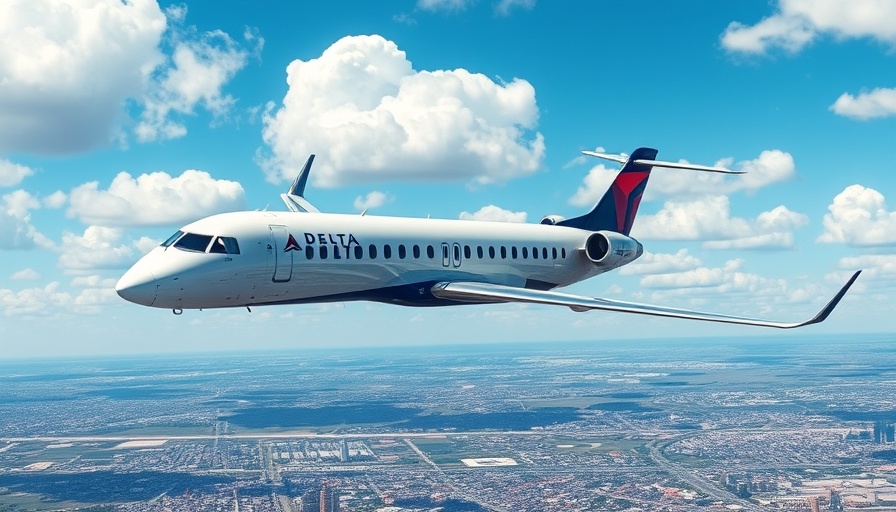
Delta Airlines' Commitment to Sustainable Aviation
In a significant stride towards sustainability, Delta Airlines has announced its support for Maeve Aerospace's innovative hybrid-electric regional jet. This partnership highlights an exciting new chapter for the aviation industry, as companies pivot towards eco-friendly technologies to reduce emissions and promote cleaner travel.
The Hybrid Jet: A Game Changer for Regional Travel
Maeve's hybrid-electric jet promises to transform regional air travel by offering lower operational costs and a reduced carbon footprint compared to traditional aircraft. With a seating capacity of up to 19 passengers, this aircraft is designed to cater to shorter routes connecting smaller communities. By operating more sustainably, airlines can not only improve their environmental impact but also appeal to an increasingly eco-conscious customer base.
Why This Matters for Pilots and Aviation Enthusiasts
The move towards hybrid aviation is more than just a corporate strategy; it represents a shift in how we view flight. For aspiring pilots and aviation enthusiasts, the development of these advanced aircraft opens up fresh opportunities to learn to fly with an emphasis on sustainability. The interconnectedness of technology and ecology fosters a new narrative for the aviation world, encouraging a generation of flyers to consider the ecological impacts of their journeys.
A Boost for Local Airports and Communities
Local airports stand to benefit significantly from the introduction of regional jets like Maeve’s. With the promise of efficient and eco-friendly travel, these airports may expect increased traffic and potential growth in local economies. Furthermore, as more travelers become aware of the environmental implications of depending on traditional jets, smaller airports become the eco-friendly hubs for travel, driving local initiatives and promoting community engagement.
Building on Innovation: Future Implications for Aviation
The investment from Delta Airlines not only supports Maeve's development but also symbolizes a larger trend within the industry. As hybrid technology takes flight, industry experts predict a wave of innovations that could redefine aviation in the years to come. This includes further advancements in battery technology, improved fuel efficiency, and even more sustainable materials in aircraft manufacturing. Pilots and aviation insiders can expect an exciting period filled with new learning opportunities and advancements in flight training.
Conclusion: Take Flight Into the Future
Delta Airlines’ backing for Maeve Aerospace signals more than just an investment; it’s a leap towards a sustainable aviation future. For those eager to enter the world of flying, understanding the dynamics of hybrid technology and its implications will be crucial. Whether you are a seasoned pilot or just beginning to learn to fly, the horizon is bright with green innovations.
 Add Row
Add Row  Add
Add 




Write A Comment